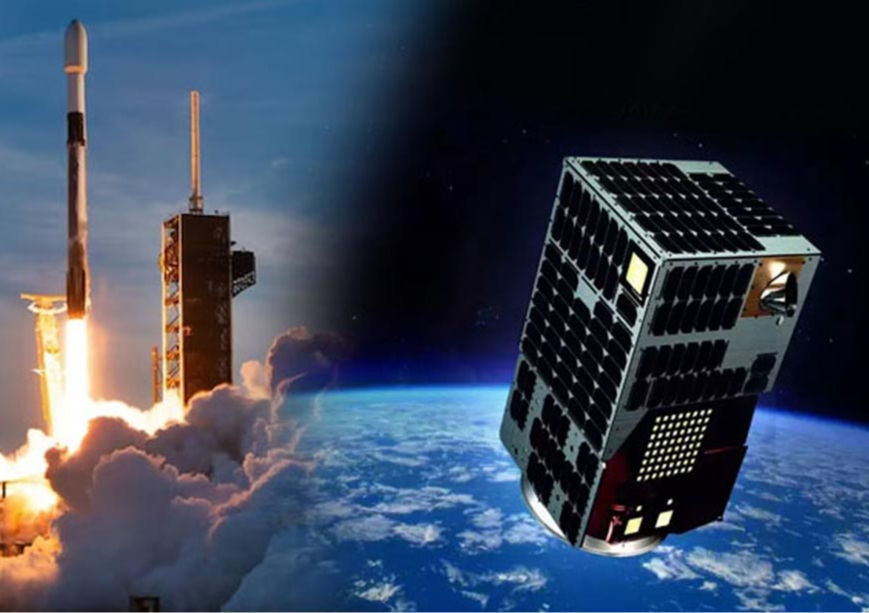
Space cooperation has been a key component of the United States (US)-India bilateral relationship. India and the US have multiple agreements for closer engagement and cooperation in space and frontier technologies. The latest manifestation of this collaboration is the initiative on Critical and Emerging Technologies (iCET), which was reached between the two in January 2023. It was aimed at fostering cooperation in several areas including space and two critical emerging technologies—Artificial Intelligence (AI) and Quantum Technology (QT). The iCET is a good basis for evaluating whether frontier technologies like AI and QT can get the requisite attention and traction for more robust defence cooperation.
Albeit collaborative engagement on the latter two technologies are not specifically part of the “Defence Innovation and Technology Cooperation” or for that matter SDRs, UAVs and sensors under the iCET. The iCET does call for generating a new “Innovation Bridge” that links the defence start-ups in the two countries. It embodies a vision for deep tech cooperation which by definition requires creating new technology and generating innovation, but remains silent on the specific areas that require focus and benchmarks to be met. However, there is a foundation for extending cooperation to areas such as AI and QT for defence applications in the US-India dyad.
The iCET is a good basis for evaluating whether frontier technologies like AI and QT can get the requisite attention and traction for more robust defence cooperation.
Space technology is one domain where cooperation between the US and India tends to be confined to civilian and commercial applications. Among the recent exceptions was the agreement in November 2023, between the American company Satellogic and India’s Tata Advanced Systems Limited (TASL). This led to the development of the TSAT-1A which was launched from Space X’ Falcon 9 rocket from the Kennedy Space Center in April 2024. TSAT-1A is a sub-meter resolution electro-optical Earth Observation (EO) satellite whose images are dynamic in range, featuring higher collection capacity, “low latency delivery through multispectral and hyperspectral capabilities.” Satellogic and TASL’s complementary capabilities enabled the development, integration and launch of the TSAT-1A. The US-based company has “…strengths in developing and integrating advanced Earth Observation satellites and TASL’s capability to undertake complex system integration”. The TASL’s Vemagal facility in Karnataka completed the Assembly, Integration and Testing (AIT). Satellogic and TASL are not space start-ups dedicated to defence. The latter is an established subsidiary of Tata Sons and the former is a 14-year-old company. Nevertheless, they offer a template for how defence start-ups in the US and India can collaborate through innovation as stated in the iCET.
As noted, the TSAT 1-A spacecraft carries hyperspectral and multispectral payloads which hold considerable importance for defence. Multispectral payloads contribute by capturing imaging data that are of medium resolution covering land use, forest cover, production patterns in agriculture, water bodies, and environmental conditions in a given area. In terms of defence applications, multispectral payloads generate Imagery Intelligence (IMINT) capturing imaging data on missile bases, nuclear test sites, airbases and other large military installations. The US Landsat and French SPOT satellites provide multispectral imagery which are commercially available and, in some cases, can be obtained by official defence entities as the US Department of Defence (DoD) does. India’s Ministry of Defence (MoD) and government agencies associated with satellite remote sensing such as the Defence Image Processing and Analysis Centre (DIPAC) have also obtained IMINT from overseas. Hyperspectral imaging satellites are high-resolution imaging spacecraft. Unlike multispectral satellites, which can image data only across a small number of spectral bands, hyperspectral imaging satellites provide high-resolution imagery data across hundreds to thousands of bands to the point that they can provide detailed data related to every shade between colours in a rainbow. In reality, Multispectral Imaging (MSI) systems and Hyperspectral Imaging (HSI) systems tend to complement each other and have intrinsic advantages. In a nutshell, HSI has a low spatial resolution, whereas MSI has a higher spatial resolution. It is precisely for this reason that TSAT-1A carries both HSI and MSI payloads.
Multispectral payloads contribute by capturing imaging data that are of medium resolution covering land use, forest cover, production patterns in agriculture, water bodies, and environmental conditions in a given area.
Although TASL proved its proficiency in AIT and Satellogic in developing the multispectral and hyperspectral payloads, the former will also need to develop capabilities in advanced spectral photography. This could be done collaboratively with US-based start-ups and companies or with India-based start-ups and companies. The latter requirement is all the more urgent in the face of India’s excessive dependence on the US to obtain classified imagery data for coverage of the Line of Actual Control (LaC) to track Chinese military deployments. TSAT-1A only goes towards partially meeting India’s IMINT needs. Reciprocally, as Indian private enterprise gains technical proficiency in developing geospatial and imaging spacecraft, India can also share satellite-derived IMINT with the US.
Given the extent to which the TSAT-1A payloads are applicable to defence, possibilities for expanding defence-related space ties between the two countries exist, however, the other areas of technological cooperation through collaborative ventures between defence start-ups, especially in QT and AI will take time to crystallise in practice. Nevertheless, the Satellogic-TASL cooperative endeavour serves as a model for more joint ventures between the private sectors of both countries that can be expanded to cover defence-related joint ventures in QT and AI.
Thus, there are increasing possibilities for the expansion of US-India space cooperation with defence applications and the TSAT-1A launch could serve as the foundation for additional cooperation that extend beyond the domain of space technology.
Kartik Bommakanti is a Senior Fellow at the Observer Research Foundation
The views expressed above belong to the author(s). ORF research and analyses now available on Telegram! Click here to access our curated content — blogs, longforms and interviews.




 PREV
PREV

.png)
.png)